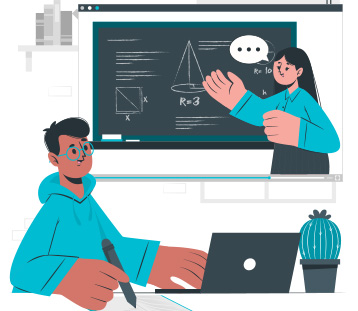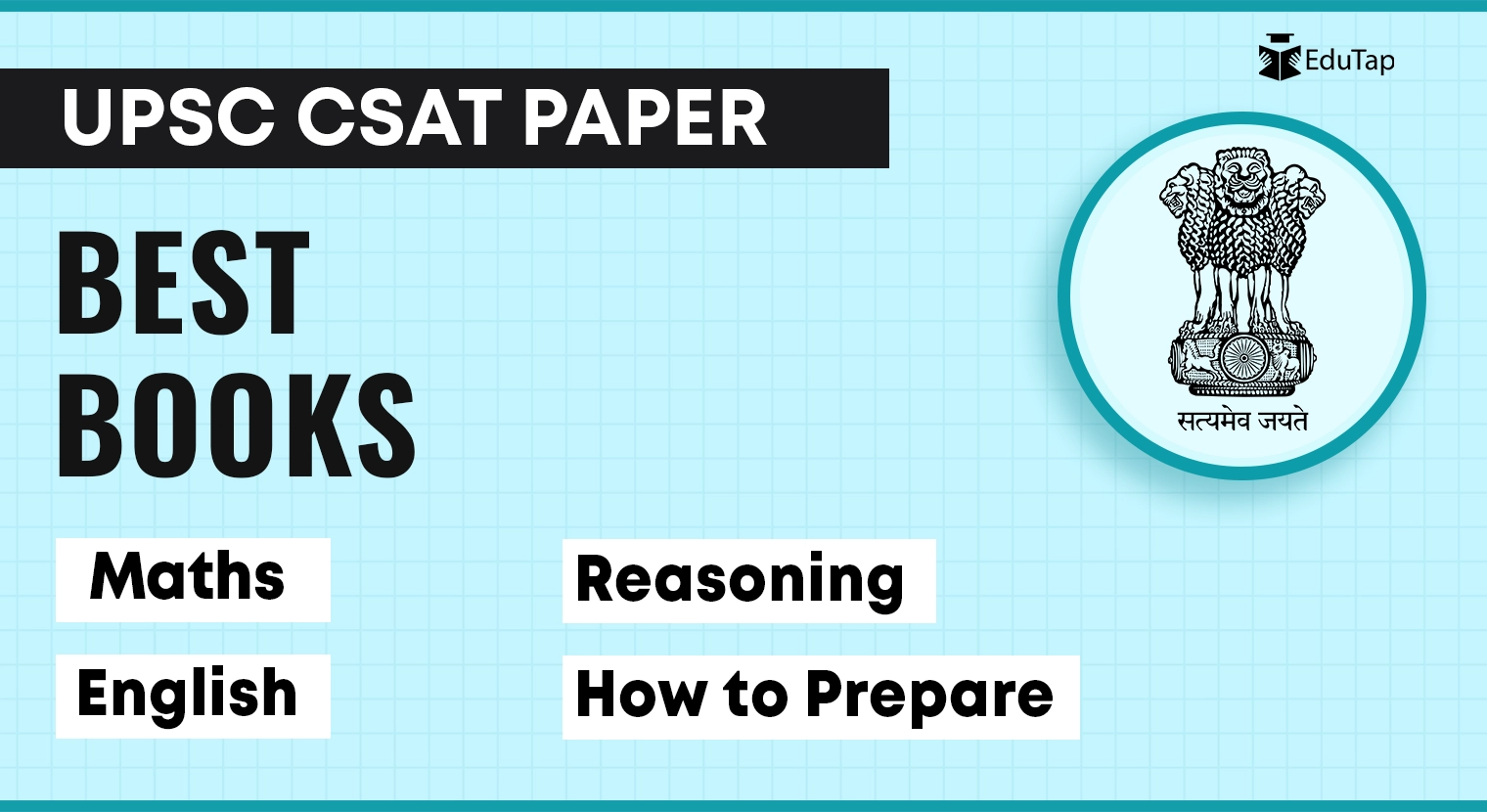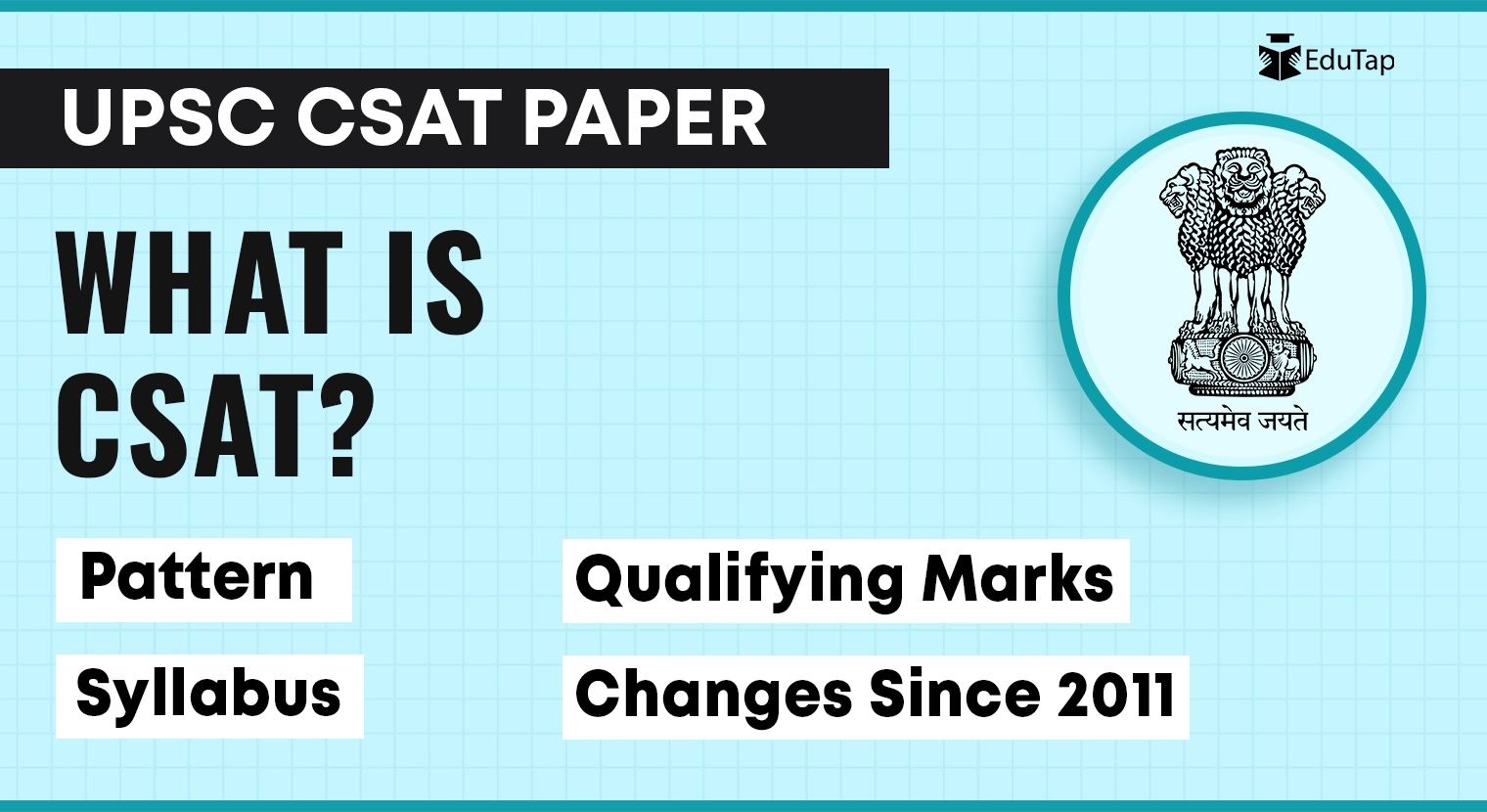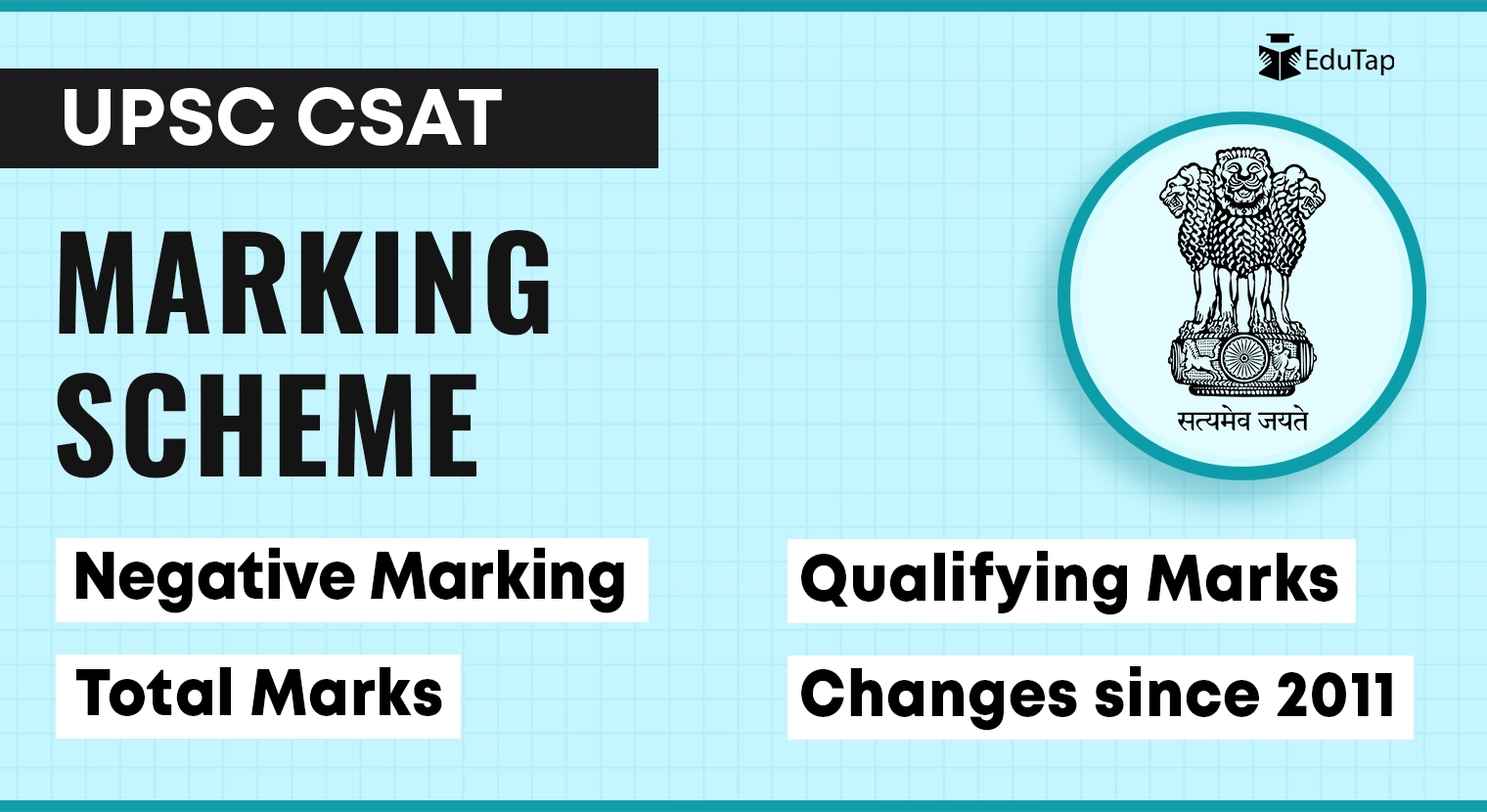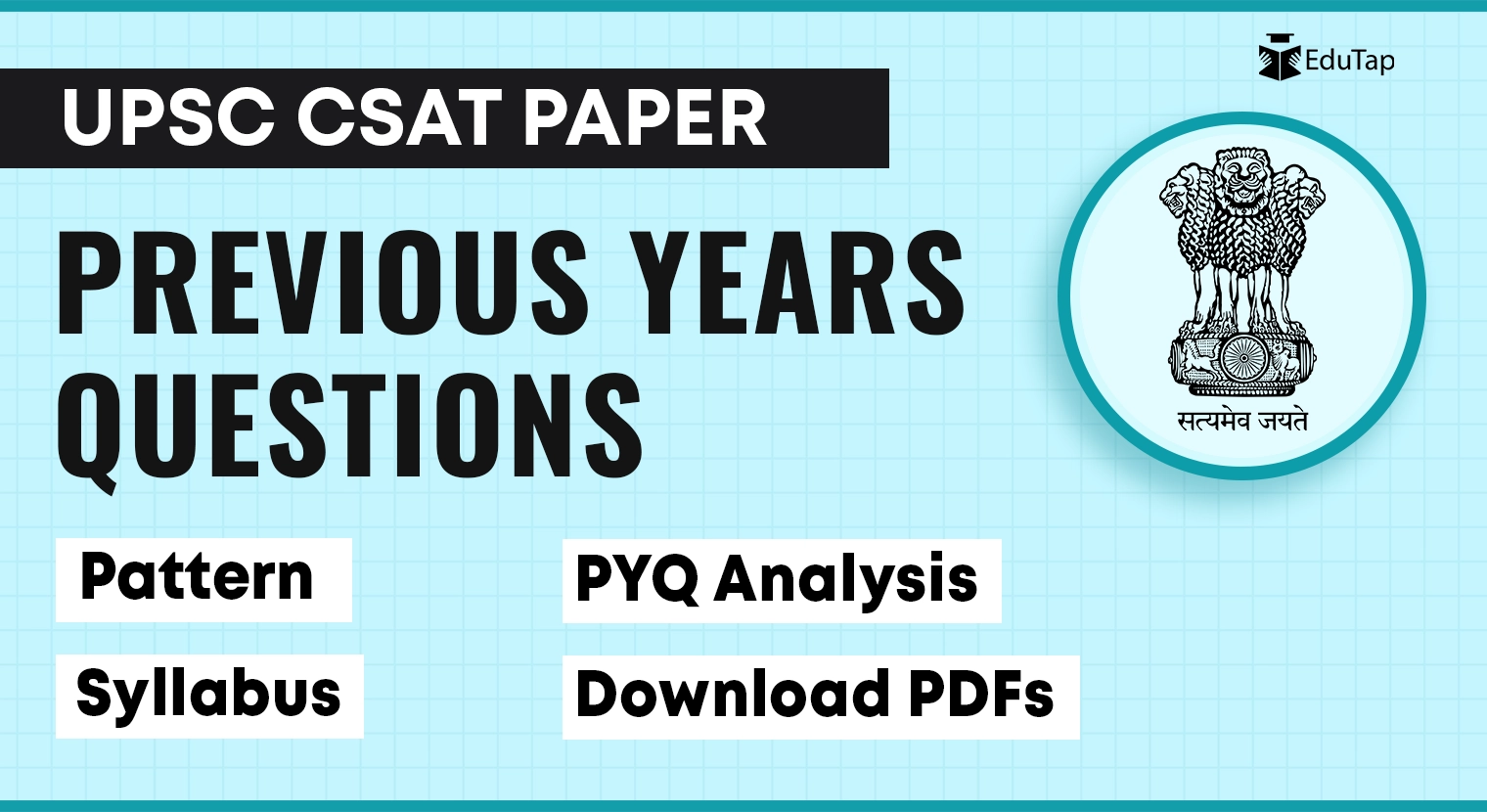The UPSC Civil Services Examination serves as a gateway to a prestigious career in the civil services of India. As millions of students prepare for this competitive examination, an important question often arises in the minds of aspirants during prelims preparation: “Is UPSC CSAT tough?”
Let’s find the answer by decoding the challenge behind UPSC CSAT. This blog breaks down essential sources of information such as PYQs and types of questions asked, to help you understand the syllabus and its difficulty level. It also provides subject-wise insights to empower you to confidently navigate your CSAT preparation.
Let’s first understand why CSAT is considered challenging by looking at common mistakes that aspirants make during their preparation.
UPSC CSAT: 5 Reasons Why Aspirants Fail
The CSAT paper is divided into three subjects, i.e., Maths, Reasoning, and English. It aims to test your aptitude, logical reasoning, problem-solving skills, and comprehension abilities.
Following are a few reasons why candidates are unable to clear their UPSC Prelims because of shortcomings in the CSAT paper 2.
- Overconfidence: Many aspirants overlook the importance of CSAT paper 2, assuming that their basic Math and English knowledge is enough. As a result, they focus on GS paper 1 preparation only during prelims.
- Ignoring the Value of PYQs: Aspirants often ignore the importance of examining the previous years’ question papers for CSAT. As a result, they miss out on understanding the expected difficulty and the types of questions asked.
- Time wasted on Difficult Questions: During the exam, candidates forget to consider the time needed for each question. They end up spending too much time trying to solve difficult questions, forgetting it’s a qualifying exam.
- Forgetting about Negative Marking: Many candidates forget about the impact of negative marking in the CSAT exam and try to answer as many questions as possible. This leads to them failing to clear UPSC prelims by a few marks or even 0.5 marks in paper 2.
- Nobody talks about CSAT difficulty: Most aspirants and mentors don’t openly discuss how CSAT can be a challenge. As a result, aspirants allocate limited time for CSAT self-study but lack consistency in preparation due to a lack of prioritization.
In conclusion, overconfidence or an oversight of the importance of CSAT paper 2 is a major reason for failure amongst many aspirants. To succeed, one needs to identify their strengths and weaknesses through consistent practice.
Let’s now individually examine the various subjects covered in CSAT paper 2, i.e., Maths, Reasoning, and English. We will provide an overview of the PYQ analysis to identify crucial topics. We will also look at the types of questions asked under every subject to better understand the difficulty level of the three subjects.
CSAT Paper 2: Decoding Maths
Following is a quick breakdown of the previous years’ questions for Maths in CSAT Paper 2 to identify the important topics. We will also look at the types of questions asked to understand the difficulty level.
This information will provide you with a strategic understanding of the Maths section to help assess your strengths and weaknesses effectively.
Maths: PYQ Analysis
Here is the question distribution for Maths over the years.

Key Takeaways
The above table shows that the weightage of Maths questions has steadily increased over the years. From 24 out of 80 questions in 2014, the number of questions asked in 2023 went up to 43. This means that more than 50% of the paper consisted of Maths questions in 2023.
Maths: Important Topics
Following is the list of important topics for Maths crucial to your CSAT success.
- Number System
- HCF and LCM
- Permutation and Combination
- Probability
- Percentage
- Profit and Loss
- Ratio and Proportion
- Age and Partnership
- Time and Work
- Time, Speed, and Distance
- Average
- Mensuration 2D and 3D
- Number Series
Let’s understand how the difficulty level for Maths has varied over the years.
Maths: Difficulty Level
Following is the distribution of easy, moderate, and difficult questions for Maths.
| Level | 2023 | 2022 | 2021 | 2020 | 2019 | 2018 | 2017 | 2016 | 2015 | 2014 |
| Easy | 8 | 13 | 15 | 17 | 14 | 10 | 10 | 13 | 9 | 11 |
| Moderate | 21 | 16 | 9 | 18 | 13 | 11 | 12 | 10 | 11 | 9 |
| Difficult | 14 | 9 | 12 | 10 | 5 | 14 | 3 | 7 | 8 | 4 |
It is important to note that the difficulty level for questions can vary based on individual preparation and strengths and weaknesses. Let’s look at the types of questions asked to understand better.
Maths: Types of Questions
Following are a few questions from the CSAT Paper 2 of the UPSC Prelims 2023 examination.
| S.No. | Question | Topic | Level |
| Q.1 | Three of the five positive integers p, q, r, s, t are even and two of them are odd (not necessarily in order). Consider the following: 1. p + q + r – s – t is definitely even. 2. 2p + q + 2r – 2s + t is definitely odd. Which of the above statements is/are correct? | Number System | Difficult |
| Q.2 | Consider the following with respect to prime number p and composite number c. 1. P+C/P-C can be even. 2. 2p+c can be odd. 3. pc can be odd. Which of the statements given above are correct? | Number System | Moderate |
| Q.3 | A 3-digit number ABC, on multiplication with D, gives 37DD where A, B, C, and D are different non-zero digits. What is the value of A+B+C? | Number System | Moderate |
CSAT Paper 2: Decoding Reasoning
Following is a quick breakdown of the previous years’ questions for Reasoning in CSAT Paper 2 to identify the important topics. We will also look at the types of questions asked to understand the difficulty level.
This information will provide you with a strategic understanding of the Reasoning section to help assess your strengths and weaknesses effectively.
Reasoning: PYQ Analysis
Here is the question distribution for Reasoning over the years.
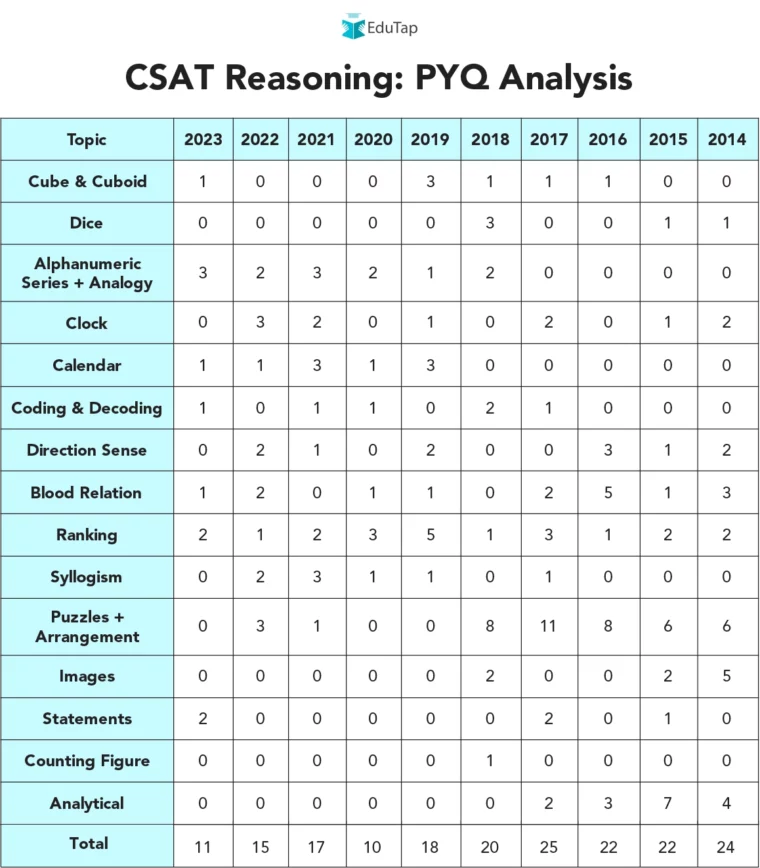
Key Takeaways
The above table shows that the weightage of Reasoning questions has steadily decreased over the years. From 24 out of 80 questions in 2014, the number of questions asked in 2023 went down to just 11.
While the priority given to Reasoning has decreased over the years, this does not mean that you should give less priority to Reasoning or skip it altogether.
Reasoning: Important Topics
Following is the list of important topics for Reasoning crucial to your CSAT success.
- Syllogism
- Blood Relation
- Direction Sense
- Alphabetical and Alphanumeric Series
- Coding and Decoding
- Calendar
- Clock
- Continuous Letter Series
- Ranking and Order
- Arrangement and Puzzles
Let’s understand how the difficulty level for Maths has varied over the years.
Reasoning: Difficulty Level
Following is the distribution of easy, moderate, and difficult questions for Reasoning.
| Level | 2023 | 2022 | 2021 | 2020 | 2019 | 2018 | 2017 | 2016 | 2015 | 2014 |
| Easy | 4 | 5 | 9 | 5 | 6 | 7 | 8 | 15 | 8 | 12 |
| Moderate | 3 | 8 | 6 | 5 | 10 | 13 | 8 | 7 | 12 | 8 |
| Difficult | 4 | 2 | 2 | 0 | 2 | 0 | 9 | 0 | 2 | 4 |
It is important to note that the difficulty level for questions can vary based on individual preparation and strengths and weaknesses. Let’s look at the types of questions asked to understand better.
Reasoning: Types of Questions
Following are a few questions from the CSAT Paper 2 of the UPSC Prelims 2023 examination.
| S.No. | Question | Topic | Level |
| Q.1 | If ‘ZERO’ is written as ‘CHUR’, then how is ‘PLAYER’ written? | Coding and Decoding | Easy |
| a) | SOCACT | ||
| b) | SODBGT | ||
| c) | SODBHT | ||
| d) | SODBHU | ||
| Q.2 | Consider the following statements: 1. A is older than B. 2. C and D are of the same age. 3. E is the youngest. 4. F is younger than D. 5. F is older than A. How many statements given above are required to determine the oldest person/persons? | Ranking and Order | Moderate |
| a) | Only two | ||
| b) | Only three | ||
| c) | Only four | ||
| d) | All five | ||
| Q.3 | Consider the following including the Question and the Statements: There are 5 members A, B, C, D, E in a family. Question: What is the relation of E to B? Statement 1: A and B are a married couple. Statement 2: D is the father of C. Statement 3: E is D’s son. Statement 4: A and C are sisters. Which one of the following is correct with respect to the above Questions and Statements? | Blood Relations | Moderate |
| a) | Statement 1, Statement 2, and Statement 3 are sufficient to answer the Question. | ||
| b) | Statement 1, Statement 3, and Statement 4 are sufficient to answer the Question. | ||
| c) | All four statements together are sufficient to answer the Question. | ||
| d) | All four statements are not sufficient to answer the Question. |
CSAT Paper 2: Decoding English
Let us look at a quick breakdown of the previous years’ questions for English in the CSAT Paper 2. It is important to note that questions here are based on comprehension passages.
English: PYQ Analysis
Following are the passage distributions of English over the years. This distribution will help you understand the question distribution, and optimize preparation time.
Kindly note,
- Level 1 = 1 Passage + 1 Question
- Level 2 = 1 Passage + 2 Questions
- Level 3 = 1 Passage + 3 or more Question

Key Takeaways
The above table shows that the weightage of English questions has varied from 25 to 32 over the years. You can attempt about 60-70% of the asked questions with 100% accuracy and ace your English section.
English: Important Topics
You can ace CSAT reading comprehension preparation by mastering analytical skills in the following key areas:
- Assumptions: Identifying possibilities, not just facts.
- Inferences: Drawing clear conclusions from given information.
- Conclusions: Selecting the logical solution, not just a random option.
To make it easier, here are a few topic areas that you can brush up your knowledge on by reading newspapers, relevant magazines, editorials, etc.
- Economic Issues
- Social Issues
- Science & Technology
- Rural Issues
- Healthcare
- Climate & Environment
- Current burning Issues (not political)
English: Difficulty Level
Following is the distribution of easy, moderate, and difficult questions for English.
| Level | 2023 | 2022 | 2021 | 2020 | 2019 | 2018 | 2017 | 2016 | 2015 | 2014 |
| Easy | 10 | 7 | 12 | 8 | 10 | 9 | 10 | 8 | 11 | 11 |
| Moderate | 8 | 8 | 9 | 12 | 12 | 8 | 12 | 11 | 11 | 12 |
| Difficult | 8 | 12 | 6 | 5 | 8 | 8 | 8 | 9 | 8 | 9 |
It is important to note that the difficulty level for questions can vary based on individual preparation and strengths and weaknesses. Let’s look at the types of questions asked to understand better.
English: Types of Questions
Following are a few questions from the CSAT Paper 2 of the UPSC Prelims 2023 examination.
| S.No. | Question | Level |
| Passage 1 | We often hear about conflicts among different States in India over river waters. Of the 20 major river systems, 14 are already water-stressed; 75% of the population lives in water-stressed regions, a third of whom live in water-scarce areas. Climate change, the demands of a rising population and the need for agriculture to keep pace, and the increased rate of urbanization and industrialization will exacerbate water stress. According to the Constitution of India, water is a State subject and not that of the Union, except for the regulation of inter-state rivers. Key to ensuring the balance between the competing demands of various stakeholders is a basin-based approach to allocate water amongst constituent regions and States. Allocating a fair share of water to them requires assessments based on objective criteria, such as specificities of the river basin, size of dependent population, existing water use and demand, efficiency of use, projected future use, etc. while ensuring the environmental needs of the river and aquifers. | Moderate |
| Q.1 | Which one of the following statements best reflects the most rational, practical, and immediate action required to ensure fair and equitable allocation of water to different stakeholders? | |
| a) | A national, pragmatic, legal, and policy framework for water allocation should be made. | |
| b) | All river systems of the country should be linked and huge aquifers created. | |
| c) | Water channels between regions of water surplus and regions of water deficit should be created. | |
| d) | To mitigate the water crisis, water demand in sectors such as agriculture and industry should be reduced. | |
| Passage 2 | More than half of Indian women and almost a quarter of Indian men of working age suffer from anemia. According to studies, they are anywhere from 5-15% less productive than they could be, as a result thereof. India also has the largest tuberculosis burden in the world, costing 170 million workdays to the country annually. But what is just as important as lost productivity now is lost potential in the future. It is becoming increasingly clear that on many measures of cognitive ability, malnourished Indian children perform two or three times worse than their adequately nourished peers. For an economy that will be more dependent on highly skilled workers, this poses a significant challenge. And it is one that really should be addressed given India’s demographic outlook. | Moderate |
| Q.2 | Which one of the following statements best reflects what is implied by the passage? | |
| a) | The education system must be strengthened in rural areas. | |
| b) | Large-scale and effective implementation of skill development programs is the need of the hour. | |
| c) | For economic development, the health and nutrition of only skilled workers need special attention. | |
| d) | For rapid economic growth as envisaged by us, attention should be paid to the health and nutrition of the people. | |
| Passage 3 | In India, a majority of farmers are marginal and small, less educated, and possess low adaptive capabilities to climate change, perhaps because of credit and other constraints. So, one cannot expect autonomous adaptation to climate change. Even if it was possible, it would not be sufficient to offset losses from climate change. To deal with this, adaptation to climate change is paramount, alongside a fast mitigation response. Another solution is to have a planned or policy-driven adaptation, which would require the government to come up with policy recommendations. Perception is a necessary prerequisite for adaptation. Whether farmers are adapting agricultural practices to climate change depends on whether they perceive it or not. However, this is not always enough for adaptation. It is important how a farmer perceives the risks associated with climate change. | Moderate |
| Q.3 | Which one of the following statements best reflects the most logical and rational message conveyed by the author of the passage? | |
| a) | Adaptation to climate change and mitigation response are basically the responsibilities of the government. | |
| b) | Climate change causes a change in government policies regarding land use patterns in the country. | |
| c) | Risk perceptions of farmers are important for motivating them to make adaptation decisions. | |
| d) | Since mitigation is not possible, governments should come up with policies for quick response to climate change. |
Next, in addition to developing a comprehensive understanding of the syllabus, you should also be aware of the marking scheme for UPSC prelims CSAT paper 2. Negative marking plays a crucial role in clearing or failing the prelims. Let us look at the number of questions you should attempt to clear CSAT.
UPSC CSAT Paper 2: Marking Scheme
To better understand the impact of negative marking on your qualifying CSAT, let’s analyze four student attempts at the CSAT paper.
| Student | No. of Questions Attempted (out of 80) | Right Answers (+ 2.5 marks) | Wrong Answers (- 0.83 marks) | Total Marks (out of 200) | Result |
| A | 26 | 26 | 0 | 65 | Not Qualified |
| B | 27 | 27 | 0 | 67.5 | Qualified |
| C | 46 | 31 | 15 | 65.05 | Not Qualified |
| D | 40 | 30 | 10 | 66.7 | Qualified |
Key Takeaways
- Based on the above analysis, the minimum number of questions that a student should attempt to qualify can’t be fixed as this will vary based on your attempt accuracy.
- The ideal scenario would be to attempt at least 27 questions with 100% accuracy. However, realistically speaking, achieving 100% accuracy is challenging as wrong answers result in negative marks.
- Hence, you should focus on a strategic approach: Identify topics that you have prepared well and attempt them accurately.
Understanding that the UPSC CSAT paper is qualifying, you must prioritize accuracy and recognize the importance of tackling a focused set of questions. Your target should be easy to moderate-level questions only.
UPSC CSAT: 5 Reasons Why You Can Do It
Now that you have a clear understanding of the important details of the exam, here are a few reasons why you are ready to conquer the CSAT paper 2 with confidence.
- You have a thorough understanding of the CSAT Paper 2 syllabus and are aware of your strengths and weaknesses.
- You have executed a comprehensive coverage for PYQs and have devoted sufficient time with consistency to practice time-bound questions.
- You have taken sufficient topic-wise and subject-wise mock tests, along with full-length tests to evaluate and track performance during preparation.
- You understand that even though CSAT Paper 2 is only qualifying in nature, you have to overcome the hurdles of negative marking and difficult questions. You can play on your strengths and answer easy and moderate-level questions with accuracy, leaving the difficult questions.
- You understand reading comprehension passages can be time-consuming. You can accurately comprehend and analyze passages within a time-bound framework.
To further strengthen your exam readiness, we encourage you to download EduTap’s solved memory-based previous years’ question papers for CSAT paper 2. These PYQs serve as valuable tools to refine your problem-solving skills and boost your confidence.
Conclusion
In conclusion, this blog has provided you with a deep understanding of the CSAT Paper 2 syllabus and important topics and strategic ways to help assess your strengths and weaknesses. It also emphasized the importance of developing a disciplined approach to practicing PYQs and mock tests. To further strengthen your preparation and face the CSAT challenge confidently, we highly recommend downloading EduTap’s solved memory-based previous years’ question papers.
FAQs
Any candidate who graduates from a recognized university with any percentage can apply for the UPSC exam. Some of the UPSC exams have specialized eligibility criteria mentioned in their exam notification.
Yes, EduTap provides a variety of free resources to help you get started with your CSAT preparation, including, free YouTube videos on various CSAT topics, memory-based solved PYQs, and regular updates on important exam-related information through blog posts.
Whether you need CSAT coaching depends on your learning style. Coaching offers structured guidance and 1-on-1 mentorship but can be expensive and time-consuming for many. Coaching is recommended when you are a beginner or are struggling to cover the syllabus effectively. We recommend solving PYQs to analyze your understanding and decide whether or not you need coaching based on your performance.
CSAT PYQs provide insights into exam trends, helping you prioritize topics based on their recurrence. Analyzing these questions and their solutions can help sharpen your syllabus comprehension, problem-solving techniques, time management skills, and overall exam strategy.

